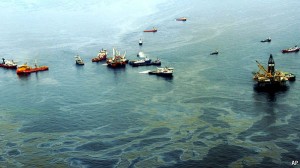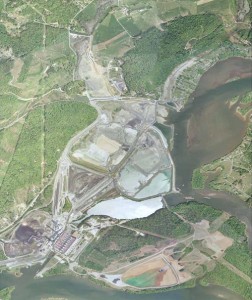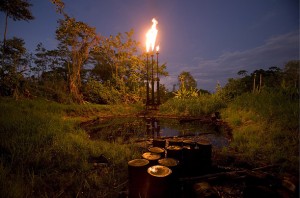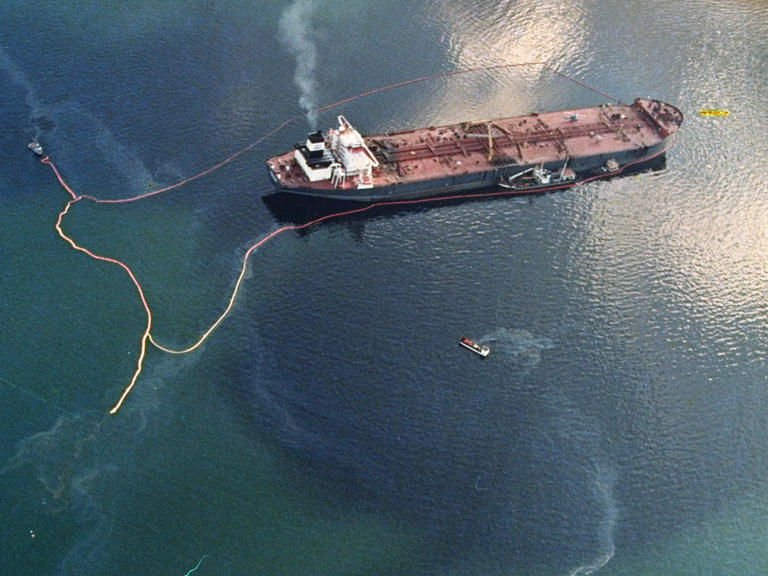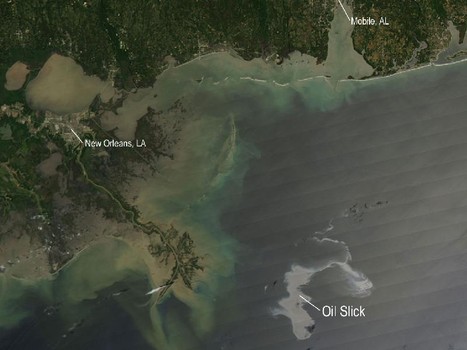http://www.twacomm.com
Category Archives: Uncategorized
solar ad in tanzania
The World, ((The World, is an outstanding daily (weekday) radio show produced jointly by Public Radio International, WGBH, and the BBC . RSS feed here. Link to podcast subscription here.)) reports on Bringing solar power to Tanzania, about the work of nonprofit Solar Aid in Tanzania.
Solar Aid, an NGO based in the UK, which installs solar projects in African countries with the conscious parallel objectives of providing energy, improving public health, slowing climate change, and attacking poverty.
Self-repairing concrete using bacteria
From the Delft University of Technology in the Netherlands, self-repairing concrete which uses bacteria that excrete calcium, developed by faculty member Henk Jonkers:
Instead of costly humans having to maintain and repair the concrete, it would be ideal if the concrete would be able to heal itself. This is now possible with help of special bacteria. These bacteria are called extremophiles, because they love to live in extreme conditions. In dry concrete for example they will not only live, but they will actively produce copious amounts of limestone. With this calcium carbonate-based material the little construction workers can actively repair occurring cracks in a concrete structure.
This novel type of self-healing concrete will lead to enormous savings on maintenance and repair costs. Also the sustainability of concrete will increase dramatically, because of a lower demand for natural resources such as cement. This will lead to lower CO2 emissions and change our way of reasoning. Instead of building against nature, biological materials and processes will be integrated into traditional engineering materials and processes.
Via William Myers in his post Growing Respect for Dirt, on the Design Blog at the Cooper-Hewitt, the Smithsonian’s National Design Museum.
Max Read of Gawker.com – exceptionally concise description of Pakistani flooding
Moreover, Mr. Read’s understatement – the entire post is three short grafs and two images – makes his post more affecting, rather than less.
Here’s a NASA image of the affected area as of August 14, 2009 (Mr. Read, without saying so, anticipates speculation that this caused by seasonal variation):
h
One year and one day later, August 15th, 2010:
Max Read’s exemplary post, The Satellite Pics of Pakistan’s Devastasting Floods, from Gawker.com
Matthew McDermott/Treehugger.com: 1,550 MW Wind Farm, World's Current Largest, Breaks Ground in Mojave, California : TreeHugger
Matthew McDermott at Treehugger reports a 1.55 gigawatt / 1,550 megawatt wind farm – probably the world’s largest wind farm in the Mojave Desert.
From 1,550 MW Wind Farm, World’s Current Largest, Breaks Ground in Mojave, California
It will boost California’s Wind Power Capacity 25%, and blows $Billions into the local economy
Ned Farquhar, Deputy Assistant Secretary, Land and Minerals Management, U.S. Dept. of the Interior, addresses the guests at Terra-Gen Power’s ground breaking ceremony for Alta Wind Energy Center in Mojave, California. Photo: Rod Thornburg
It’s been a while since we’ve seen an honest to goodness gigantic wind power project actually start construction, so this is definitely worth noting: Terra-Gen Power has announced it has begun construction on what it’s calling the world’s largest wind energy project, the 1,550 megawatt Alta Wind Energy Center, in Mojave, California. At double the capacity of the next largest completed project, the wind farm will generate enough power to electrify 275,000 homes.
When completed, AWEC will consist of 600 Vestas turbines, increase the installed wind power capacity in California by 25% and, according to Terra-Gen, conserve more than 888 million gallons of water annually–presumably based on had an equivalent amount of energy been generated via non-renewable energy.
via 1,550 MW Wind Farm, World’s Current Largest, Breaks Ground in Mojave, California : TreeHugger.
Reuters: Venezuela threatens U.S. Oil Supply Cut
[table id=1 /]
According to Reuters, via NYTimes.com, Reporting by Frank Jack Daniel; Editing by Eric Beech, President Chavez has threatened to cut off the U.S. oil supply. Here’s the entire copy which constitutes the piece, and the hed:
Venezuela’s Chavez Threatens U.S. Oil Supply Cut
CARACAS (Reuters) – Venezuelan President Hugo Chavez on Sunday threatened to cut oil supplies to the United States in case of a military attack from Colombia, in an escalating spat over charges Venezuela harbors leftist rebels.
There are, of course, reasons to be worried about energy independence, and this threat is one of them.
# 1 Saudi Arabia: 10,250,000 bbl/day 2007 Time series
# 2 Russia: 9,876,000 bbl/day 2007 Time series
# 3 United States: 8,457,000 bbl/day 2007 Time series
# 4 Iran: 4,033,000 bbl/day 2007 Time series
# 5 China: 3,725,000 bbl/day 2008 Time series
# 6 Mexico: 3,501,000 bbl/day 2007 Time series
# 7 Canada: 3,425,000 bbl/day 2007 Time series
# 8 United Arab Emirates: 2,948,000 bbl/day 2007 Time series
# 10 Venezuela: 2,667,000 bbl/day 2007 Time series
# 11 Kuwait: 2,613,000 bbl/day 2007 Time series
# 12 Norway: 2,565,000 bbl/day 2007 Time series
# 13 Nigeria: 2,352,000 bbl/day 2007 Time series
# 14 Brazil: 2,277,000 bbl/day 2007 Time series
# 15 Algeria: 2,173,000 bbl/day 2007 Time series
# 16 Iraq: 2,094,000 bbl/day 2007 Time series
# 17 Angola: 1,910,000 bbl/day 2008 Time series
# 18 Libya: 1,845,000 bbl/day 2007 Time series
# 19 United Kingdom: 1,690,000 bbl/day 2007 Time series
# 20 Kazakhstan: 1,445,000 bbl/day 2007 Time series
Deepwater Horizon – the Chernobyl of Deep Water Drilling?
Fifth in a series I wish I didn’t have to write (0, 1, 2, 3, 4, 5)
After 42 days (six weeks) the Deepwater Horizon Well is still gushing an estimated 70,000 barrels per day. It has probably gushed around 2.94 Million barrels of crude oil into the Gulf of Mexico, about 123.5 Million gallons – 123,500,000 gallons.
2.94 Million Barrels. 123.5 Million Gallons. That’s a huge amount of oil in the Gulf of Mexico, but according to Nationmaster.com, the US consumed at a rate of 21 Million Barrels per Day in 2007. The U.S. Daily Burn is 7 Deepwater Horizon spills.
It’s one tenth of the 1.2 billion gallons (1,200,000,000 gallons) of coal fly ash that on 12/22/08 flooded the Clinch and Emory Rivers and 3,000 acres near Kingston, Tennessee with arsenic, mercury, lead, and other toxic heavy metals. (Official EPA, NY Times, I Love Mountains)
That’s a fraction of the up to 6 million barrels per day of Kuwaiti oil Saddam burned after his rout in “Desert Storm” in 1991. And those fires burned for 6 Months (I Love Green).
And less than 0.667% of the 18 Billion Gallons of oil process waste Chevron Texaco allegedly dumped into the rain forests of Ecuador between 1964 and 1990. (click here and here).
It’s more than the consensus estimate of 250,000 barrels of oil spilled by the Exxon Valdez into the Prince William Sound, which after 21 years, remains degraded (click here and here).
So what’s different?
Let’s look at these again:
- Deepwater Horizon: 70,000 barrels a day, 40 days, 2.8 million barrels (and counting), Gulf of Mexico, 2010.
- TVA Kingston: 1.2 billion gallons, toxic sludge, upstream of Kingston, Tennessee, 12/22/08.
- Chevron Texaco: (alleged) 18 Billion Gallons (428.6 million barrles) of Oil Process Waste, Rainforests of Ecuador, 1964 to 1990.
- Oil Fires of Kuwait: 6 Million Barrels per Day, up to 6 Months, 1991.
- Exxon Valdez: 250,000 barrels, Prince William Sound, 1989.
So what’s different?
It’s not the Ecuadorian rainforest, the Kuwaiti desert, the backwoods of Tennessee (excuse me Bubba, but to the Yankees of Wall Street and the Brahmins of Boston, Kingston, Tennessee is backwoods) or a remote body of water off the coast of Alaska. It’s the Gulf of Mexico. That’s not our backyard; it’s our playground. The Gulf coast of Florida from Pensacola to Georgia is (soon will be was) known as the “Emerald Coast.” I was there. The beaches are (were) beautiful. In the morning, before the people came out to play you could see dolphins swimming in the waters. It’s our fishing hole: 25% of our seafood, 70% of our shrimp, came from the Gulf.
This isn’t the first fishing ground to die. We used to get Little Neck clams from the Long Island Sound, halibut and shad, even sturgeon, from the Hudson River, and Maryland crab from the Chesapeake. But this is the biggest, the most sudden and the most dramatic.
This is a singularity. The oil is on beaches, bays, bayous, and marshes of Louisiana, Mississippi, and Georgia. Some may be in the Gulf Stream, and if so will wrap around Florida and head up the Atlantic past the Outer Banks, the Chesapeake, the Jersey Shore, Fire Island, The Hamptons, Martha’s Vinyard, Cape Cod, and the rocky shores of Maine.
It’s not that BP wanted this to happen. They sell oil because we buy oil. The problem is that neither BP, nor the government, nor anyone, really knows how to stop it. The engineers are saying things like:
“This is interesting. I’ve never seen this before. What do you think we should do?”
“I don’t know, what do YOU think we should do?”
When engineers say things like that grab your hat and run like hell.
The Deepwater Horizen accident might do for oil what 3 Mile Island and Chernobyl did for nuclear power. (However, the biggest difference is that we are more dependent on fossil fuels than we were on nuclear power, and Chernobyl and 3 Mile Island made crystal clear to the people on Wall Street that their billion dollar investments could quickly turn into multi-billion liabilities.)
So along with your hat, coat, and camping gear, grab some solar modules.
I monitor an investment list-serve that is approaching this from a pure capitalist investor perspective, and they’re asking “Should you get out of oil?”
With oil still flooding into the Gulf and BP PLC’s failure to do anything about it, shivers are running down the spine of those who considered offshore oil a lucrative investment. Now with the planned ban on offshore drilling in the US, what will happen to the industry? What are the consequences for our economy as a whole? More importantly, what does it mean for YOUR portfolio?
When the investors, albeit the “contrarians,” are saying “Business as usual is bad for our wallets” it means the paradigm is shifting.
One Month After The Spill BP Siphoning 3,000 Barrels Per Day
Fourth in a series 1, 2, 3, 4) that began on “Earth Day” (0).
Steve Gelsi at Marketwatch (click here) reports that BP is now siphoning 3,000 Barrels Per Day from the Deepwater Horizon Spill. According to research by NPR, the spill was 70,000 barrels per day. In the 30 days that have elapsed since the April 20 accident a total 2,100,000 to barrels have spilled. And BP is siphoning off 3,000 per day. At that rate the spill will be cleaned up in only 700 days if it were to stop gushing now. That’s less than two years.
Greg Bluestein and Michael Kunzelman at Gouverneur Times (click here) report that oil from the slick has entered the Loop Current – which is part of the Gulf Stream.
This could be for fossil fuels what Chernobyl was for nuclear power.
Full text below the click. Continue reading
Handy Henry Marsh: brain doctor uses DIY drill – Times Online
Henry Marsh
Henry Marsh spends his holidays working 18 hour days for free in a Kiev, using the household drill
The young man lies back on the hospital trolley and waits patiently as his head is secured in place with a vice.
Marian Dolishny’s nervous smile and worried, flicking eyes, betray the certain knowledge that what he is about to undergo will be anything but pleasant. But he also knows that time is short: if the enormous tumour inside his head is not removed, it will soon kill him.
Minutes later the team of doctors, including one of Britain’s most eminent brain surgeons, begins to break into the skull of their fully conscious patient – with a £30 Bosch PSR960 handy-man’s cordless drill.
Amazingly, and despite the low-voltage tool running out of power halfway through the process, Dolishny’s operation is a success, with his tumour skilfully excavated at the hands of Henry Marsh.
Related Links
* Brain surgeon operates with DIY drill
The procedure, captured as part of a documentary to be screened on BBC2 later this month, was a routine triumph for Marsh, who regularly takes time off as a consultant at St George’s hospital in south London to travel to Ukraine and save lives despite having access only to primitive tools.
In Britain, the same operation would only be undertaken with the benefit of a £30,000 compressed air medical drill.
Speaking about the trials of his visits to Ukraine, Marsh said: “I’m not recommending that we should all use Bosch do-it-yourself drills in England, but it shows how with improvisation you can achieve a lot.”
Marsh’s life-saving exploits in Ukraine began 15 years ago when he visited a state hospital in the former Soviet republic to give a series of lectures. Little could have prepared him for the conditions endured by both doctors and patients. “It was like being in a horror film,” he said. “It was so awful it didn’t seem real.”
Patients with benign tumours, which would have been diagnosed early and quickly dealt with in Britain, were only treated once they had caused blindness or were bulging grotesquely off the sides of patients’ heads.
In Ukraine so little money is invested in the state health system that Marsh has to drill through the skulls of patients under local anaesthetic because no one is sufficiently trained to fully sedate them.
Marsh said he had watched aghast as patients died while doctors were locked in bureaucratic meetings. “I couldn’t bear to stand by and do nothing,” said Marsh, 58. “A Ukrainian doctor told me I couldn’t do anything to help but I wasn’t prepared to accept that.”
Then he met Igor Petrovich, a Ukrainian neurosurgeon who wanted to fight against his country’s bankrupt medical system. Impressed by his willingness to speak honestly about the atrocious conditions in a climate where no one criticised the state, Marsh championed Petrovich and organised for him to come to Britain to learn more.
Since meeting Petrovich, Marsh has been making at least two private trips a year to work voluntarily with him at his neurology clinic in Kiev. On each visit, he takes a raft of disused equipment that has been thrown out by the NHS, and helps Petrovich make diagnoses and perform operations.
“I’ve taught him everything I know,” said Marsh, who has given Petrovich an advanced compressed air drill to replace his Bosch. “He’s now able to do things that I can’t.”
For all its failings, some aspects of the Ukrainian health service compare favourably with the NHS, Marsh said.
At the time of their first meeting, Marsh was a senior surgeon at the specialist Atkinson Morley hospital in Wimbledon, operating on 10-15 patients a week. “I was completely free; I made clinical judgments and was trusted to treat patients to the best of my ability.”
Today, though, their roles have more or less reversed, he said. “Igor is now doing a huge amount of operating, far more than me, while I, as with all senior doctors on the NHS, am struggling under a tsunami of regulation and bureaucracy.”
Working in Ukraine has also brought the wastefulness of the NHS into focus for Marsh. Drill bits used in brain surgery that cost the NHS £80 a piece are thrown away after a single use to help prevent the spread of prion-related diseases such as CJD.
In Petrovich’s practice, a drill bit will be used for up to 10 years, perfectly safely. “We never used to throw them away in the UK,” says Marsh. “They would be sterilised and reused. Now they just end up as landfill, and Igor’s rates of infection are no worse then ours. It’s insane.
“I am one of the government advisers on prion disease. In the case of the skull perforators, skull and scalp is not an at-risk tissue for surgical treatments. So that argument does not apply.”
The English Surgeon will be shown on BBC2 on March 30
via Handy Henry Marsh: brain doctor uses DIY drill – Times Online.
sand table exercises – Google Search
BBC NEWS | Health | Brain surgery with a DIY drill
Henry Marsh is handy with tools.
His favourite hobby is woodwork: “I love to work with my hands,” he says.
That is just as well, because when not working with the lathe, Henry is wielding scalpels in the operating theatre as one of the UK's most respected neurosurgeons, or, sometimes, boring a Bosch drill into the brain of a conscious man.
Fifteen years ago, Henry visited Ukraine to give a series of lectures on brain surgery.
He was shocked by what he witnessed.
Decades of under-investment in medical services in the former Soviet state had left it with little infrastructure or expertise in neurological conditions.
Horror film
Patients with the kind of benign tumours which would be quickly identified and excised in the UK had been left untreated with terrible results.
That is the problem with what we do – we can often kill people
Igor Petrovich
“It was like being in a horror film,” he recalls, as he watches home video images of the huge tumours growing on the heads of the patients.
On his trip, Henry met one Ukrainian surgeon who was trying hard to make a difference.
Igor Petrovich had been enduring constant threats and harassment as he tried to reform his department at the Military Hospital in Kiev.
Petrovich combines a revolutionary zeal with a droll wit: “That is the problem with what we do,” he has remarked to Henry, “We can often kill people.”
He impressed Marsh so much that Henry brought him to London for further training.
Ever since that fortuitous meeting, Henry has been visiting the Ukraine at least twice a year to share his expertise and undertake complex operations with Igor.
He normally arrives bearing gifts – disused medical equipment from St George's Hospital, Tooting – often packaged in boxes made in his shed at home.
Randy Sarafan/Instructables.com: chalkboard table
Randy Sarafan defies easy description. He’s clearly a polymath of some sort, a provocateur
of more than one sort, and a cannon (perhaps loose perhaps not) on the deck of technology. Even a quick look at his work makes it clear that his excellent contributions to “appropriate technology” don’t preclude the occasional foray into inappropriate technology. He’s also the author of the funniest collection of unanswered (((To be more precise, many of “Laszlo Toth’s” letters were, in fact, answered)) correspondence since The Laszlo Letters ((Bob Garfield interviews Don Novello about the Laszlo Letters on the WNYC show On The Media)).
Mr. Sarafan has posted a recipe for a simple chalkboard-surfaced table on the outstanding and ever-useful Instructables.com.
While Sarafan’s design assumes Ikea trestles, this can be managed with sawhorses, or leaned against or mounted on a wall.The only indispensable items are chalkboard paint, a relatively smooth surface (Sarafan’s table was made of MDF) and chalk.
The point is that, with inexpensive, easily available materials, it’s possible to create a graphic representation of, for instance, a neighborhood – for planning purposes – or even in the midst of a crisis. While rolls of butcher paper are also available quickly, they’re not easily erased as revisions and updates are required. There are, of course, more sophisticated variations: magnetic white boards permit the use of objects and markers (for streets, vehicles, people); acetate overlays over maps permit drawing with grease pencils; GIS applications permit much more nuanced data manipulation.
But this will work-
and can be seen and worked on by more than one person at once – without electricity, without much more than a smooth surface, chalkboard paint, and chalk.
We’ll try to post some other variations on simple “sand-table” solutions in the near future.
Department of Homeland Security adopts NFPA standards for responders
The National Fire Protection Association (NFPA) and the U.S. Department of Homeland Security (DHS) announced the adoption of 11 NFPA standards for emergency responders by DHS. The newly adopted standards will set requirements to assist federal agencies and state and local officials responsible for procuring equipment and services used by emergency responders.
– snip –
The documents adopted will provide direction and allow officials to make better procurement decisions in the following areas: professional qualifications, occupational safety and health, fire apparatus, personal protective clothing, powered rescue tools, and other equipment.
– snip –
The 11 newly adopted standards are:
* NFPA 1000, Standard for Fire Service Professional Qualifications Accreditation and Certification Systems
* NFPA 1001, Standard for Fire Fighter Professional Qualifications
* NFPA 1002, Standard for Fire Apparatus Driver/Operator Professional Qualifications
* NFPA 1006, Standard for Rescue Technician Professional Qualifications
* NFPA 1021, Standard for Fire Officer Professional Qualifications
* NFPA 1500, Standard on Fire Department Occupational Safety and Health Program* NFPA 1582, Standard on Comprehensive Occupational Medical Program for Fire Departments
* NFPA 1901, Standard for Automotive Fire Apparatus
* NFPA 1906, Standard for Wildland Fire Apparatus
* NFPA 1912, Standard for Fire Apparatus Refurbishing
* NFPA 1936, Standard on Powered Rescue Tools
International Herald Tribune: Ireland rids itself of a plastic nuisance
Because plastic bags are light and compressible, they constitute only 2 percent of landfill, but since most are not biodegradable they will be there for decades.
According to the International Herald Tribune, “By ‘bagging it,’ Ireland rids itself of a plastic nuisance“by Elisabeth Rosenthal,
There is something missing from this otherwise typical bustling cityscape.
There are taxis and buses. There are hip bars and pollution. Every other person is holding a cellphone to his ear. But there are no plastic bags, the ubiquitous symbol of urban life.
In a determined attempt to deal with litter, Ireland passed a plastic bag tax in 2002 – now 22 euro cents, about 33 U.S. cents – at the register if you want one with your purchases. There was an advertising awareness campaign. Then something happened that was bigger than the sum of these parts.
Within weeks, there was a 94 percent drop in plastic bag use. Within a year, nearly everyone bought reusable cloth bags, which they now keep in the office and the back of their cars. Plastic bags became socially unacceptable – on par with wearing a fur coat or not cleaning up after your dog.
“When my roommate brings one in the flat, it annoys the hell out of me,” said Edel Egan, a photographer carrying a load of groceries in a red backpack.
Countries from China to Australia, cities from New York to San Francisco, have promulgated laws and regulations to address the problem, with decidedly mixed success. Continue reading
Portable Armored Wall System Replaces Sandbags
Portable Armored Wall System Replaces Sandbags
February 2010
By Austin Wright
Marines in Afghanistan might soon scrap the sandbags. Instead, they’re snapping together armored walls that connect like Legos.
The Marines Corps in December spent $797,400 on 14 kits of McCurdy’s Armor, a patent-pending portable wall system. The service has already tested 25 kits.
The 6.5-foot-tall units can be assembled into bulletproof walls and forts — a process that can take less than an hour. This could save days’ worth of work digging trenches, laying sandbags and constructing outposts, according to the manufacturer, New Jersey-based Dynamic Defense Materials. “We’ve seen them used on everything from a podium to a guard tower to a long wall,” says Joe Dimond, a product specialist for the company.
The product offers protection from mortars, grenades, rockets and improvised explosive devices. It has aluminum frames that connect using steel pins, and the units can be arranged in several formations: U-shape, V-shape, J-shape or a wall.
It also has ballistic windows that open and close so service members can fire downrange. Four men can assemble one unit in less than 10 minutes without any tools or equipment, according to the company’s website.
“If you’re worried about armor-piercing rounds, you can also put on a second layer of armor,” Dimond says. “And you can add more if you’re going to be there a while.”
The product was named for Ryan S. McCurdy, a Marine who was killed in 2006 by insurgents in Iraq while pulling a wounded friend to safety.


